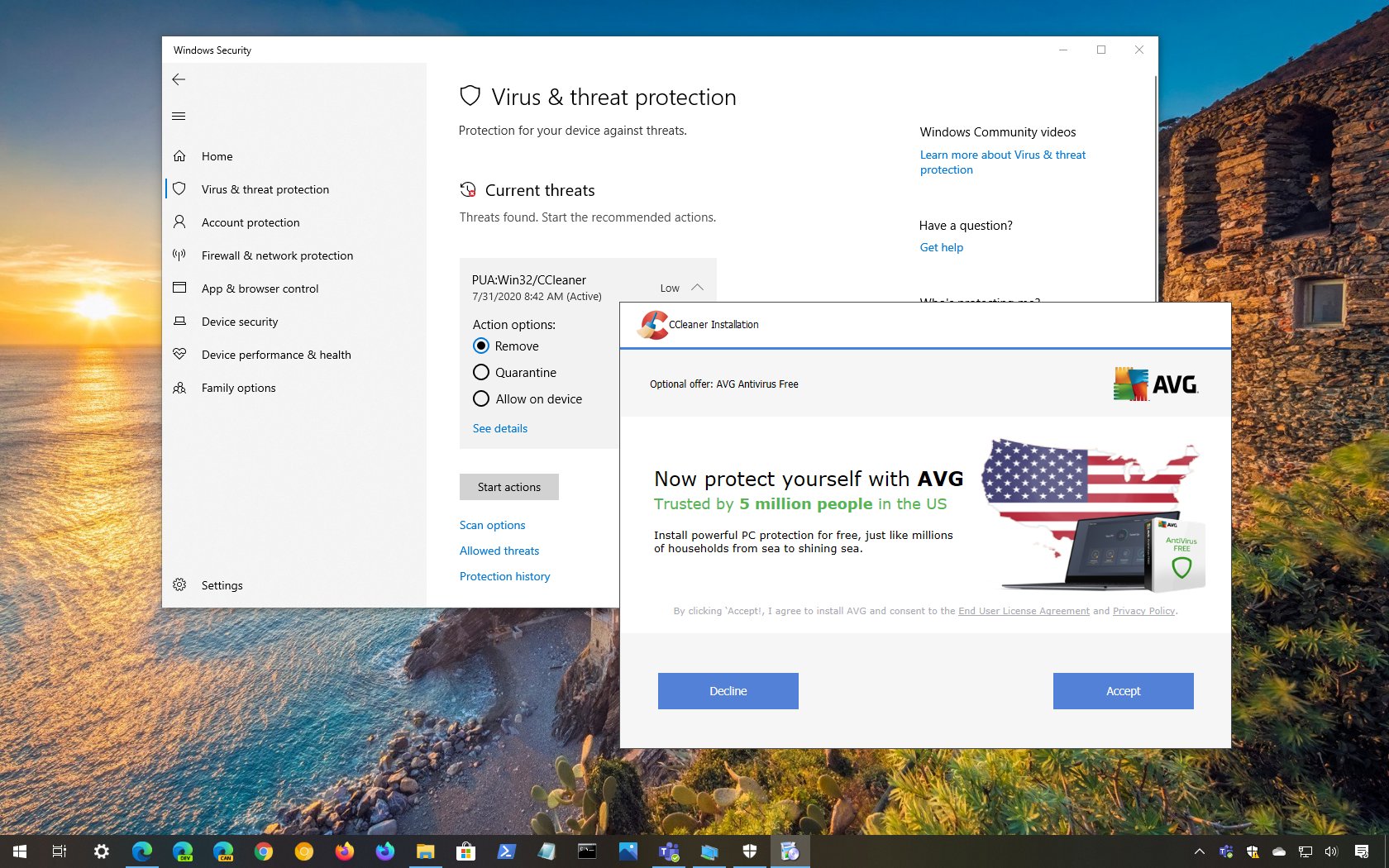
On Windows 10, the Microsoft Defender Antivirus now categorizes “CCleaner” as a Potentially Unwanted Application (PUA). Owned by Avast, CCleaner is a well-known application designed to help users to free up space by removing temporary files and optimize the operating system with tools to clean certain Registry entries and remove applications.
When the antivirus flags an app as unwanted, it does not mean that it’s a malware, but it’s detected as a piece of software that can negatively affect the user experience, as such to safeguard user productivity and ensure a positive experience the security solution flags the app unwanted.
In the case of CCleaner, Microsoft Defender is flagging certain installers because they bundle other applications that are not needed to use the software. According to the Microsoft database, the apps bundled with installers are legitimate, but including products from other providers can result in unexpected software activity that can negatively affect the user experience.
The database details that some CCleaner installers come with Google Chrome, Google Toolbar, Avast Free Antivirus, and AVG Antivirus Free. Although the setup process offers an option to opt-out, some users can easily inadvertently install these applications. As a result, Microsoft Defender Antivirus detects some CCleaner installers as potentially unwanted applications. However, it’ll only detect them if the PUA feature is enabled in the Windows Security app.
It’s important to mention that the application itself is not being flag, but rather the packaging and distribution, but the behavior also makes the app questionable.
While CCleaner includes some useful features, you should always avoid using the Registry cleaner as it might cause other problems. If you’re having issues using Windows 10, the best approach is to create a full backup of your data and perform a reset.
